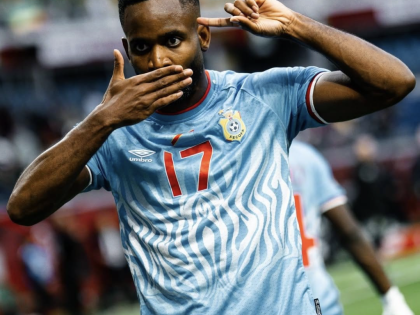Modern life in Lagos
Nigeria is surely too large and its art community too diverse for any claims for representativeness to be sincerely possible?

Adolphus Opara, Shrinking Shorelines No. 5.
Tiwani Contemporary is the latest art space in London devoted to contemporary African art. Affiliated with the non-profit Centre for Contemporary Art (CCA) in Lagos, Tiwani promises to connect artists in Nigeria with buyers in London. “The Tie That Binds Us,” a group show which collects five artists, opened in December 2011. These artists, all Nigerian and Nigerian-British, work across a range of different media. Lawson Okeyan’s plaster ceramic eggs are intriguing and pleasing, though placed too close to the floor for inspection. Adolphus Opara’s Shrinking Shorelines series, poised between art photography and photojournalism, draw wrecked machines against the clear lines of beach, sea and sky. The oil-black ink of these elegant monochrome images is a dark reminder of the industrial contamination threatening the Nigerian landscape. The exhibition also features Mary Evans’ works on paper, and a video piece and a Lagos soundscape by Emeka Ogbod.
Ben Osaghae’s paintings of modern life in Lagos demand further attention. Pictures such as ‘Endurance March’ document social realities (the orientation day of the National Youth Service) with an eye-catching color scheme. Much lies beyond the obvious attractiveness. ‘Blackout!’ moves towards the explicitly political territory of electricity supply, ironically confronting the problems with furious energy, evoking the awkward dance of figures moving through an unlit space. It is an angry and playful scene, poised between the celebration of the smallnesses of shared experience (you break something, stub your toe, light candles, make do) against the humiliating fact of hospitals’ reliance on generators in a country where international energy companies make their fortunes.
Osaghae’s ‘Vernacular Class’ sketches students at a class, quick and attentive as a Degas, moving between abstraction and representation, marks on the flat surface of the canvas and suggestions of three-dimensional space, mapping the interplay of inner and outer worlds. The painting configures the students’ mental geography: they inhabit the painting diligently, bent over their work. The dark blue bodies take on a certain weight against the turquoise background, they appear suspended heavily in space. There is no motion in this picture, in the studied poses of these studious children. No time ever passes; this picture is inhabited by boredom. The objects placed above their heads may be the objects of knowledge or distraction. The scribbling on the surface of the canvas is unfinished, inconclusive. Heidegger claimed that boredom is, in its most essential form, the experience in which being and time unite, the critical experience which makes philosophy possible. Osaghae’s images are open to the question of being in the world, and responsive to the shifting boundaries of individual life. The gallery description of the work foregrounds its socio-political content:
The importance of education is underpinned here. The composition assesses the level of intellectual interest of the pupils – from the very enthusiastic to the lackadaisical. To the very serious amongst them, ‘education is costly, but lack of it is costlier’.
It would be interesting to know more about the vernacular class, but this well-intentioned description does not do the work justice. Perhaps this art feels it necessary to emphasize its own political content in order to sell itself within an international aesthetic community. The artist’s careful observations of shared and individual experience make this work rare and precious.
To return to the promise of the title: what is the tie that binds these artists together? Nigeria is surely too large and its art community too diverse for any claims for representativeness to be sincerely possible. Art spaces such as this have obligations to the regions they propose to represent. With the range of work exhibited in this first show, and the ambition of their program of talks and exhibitions, Tiwani promises to be energetic in their engagement with the challenges of this role, and this is an exciting prospect for contemporary art in London.



















